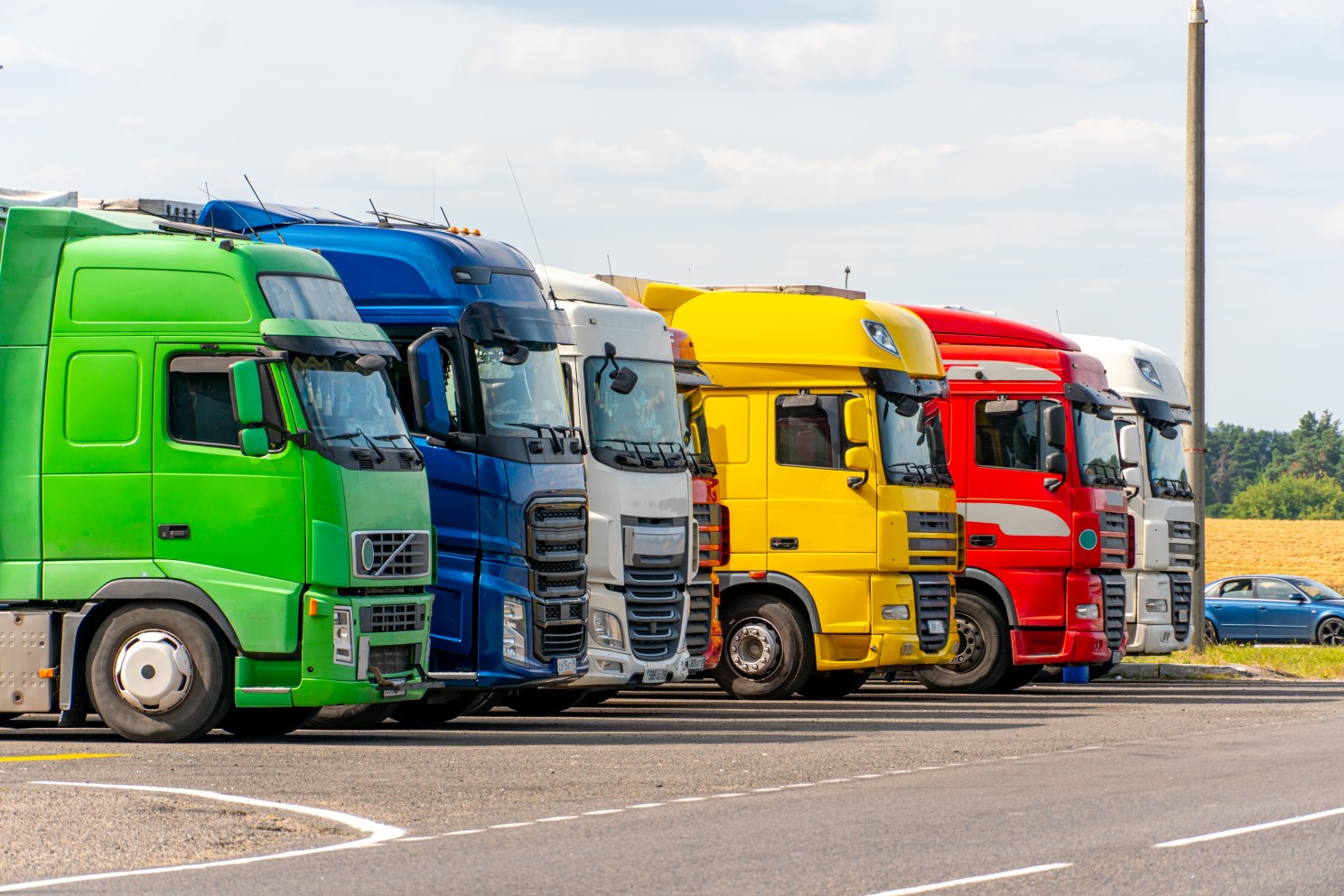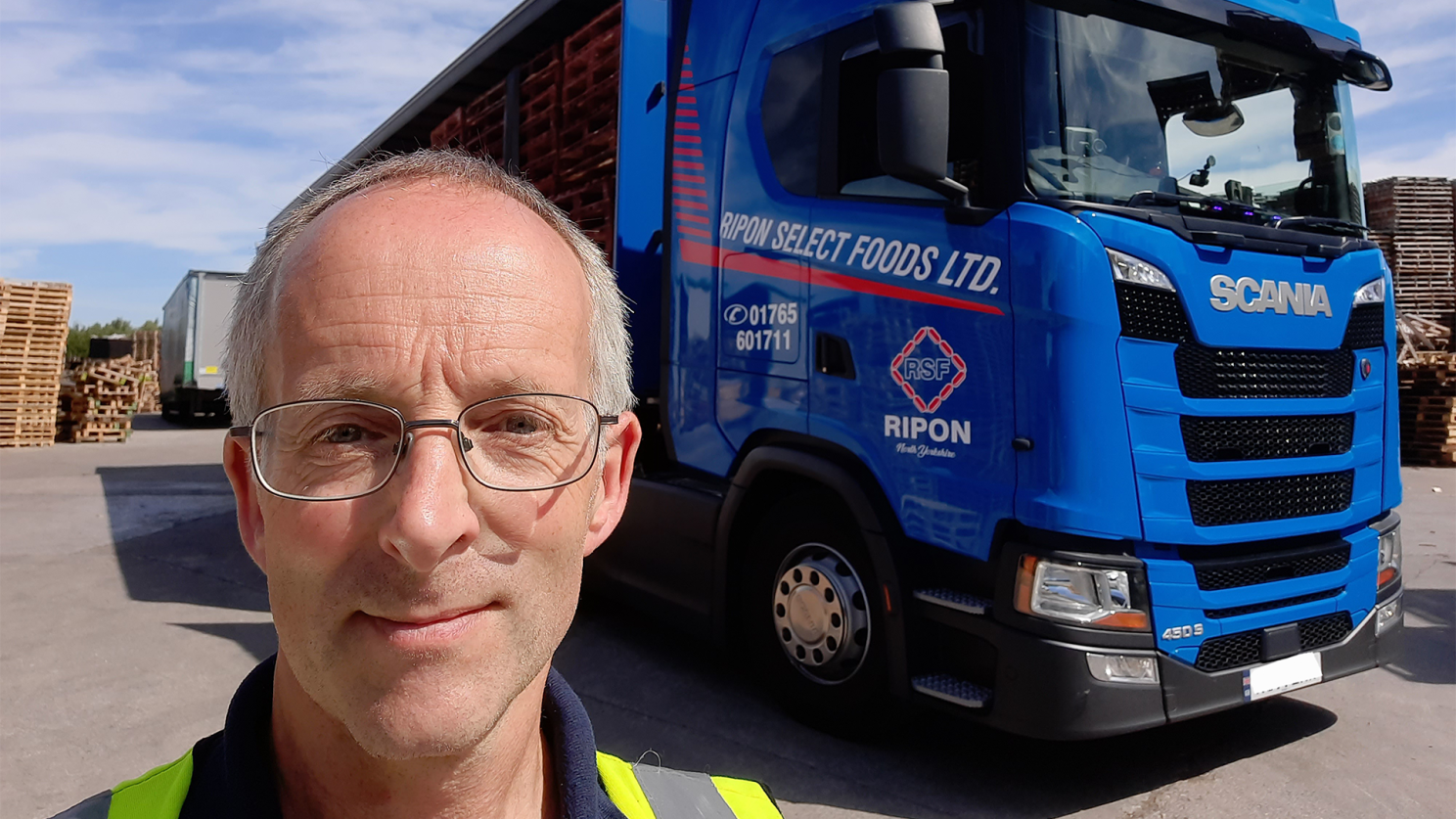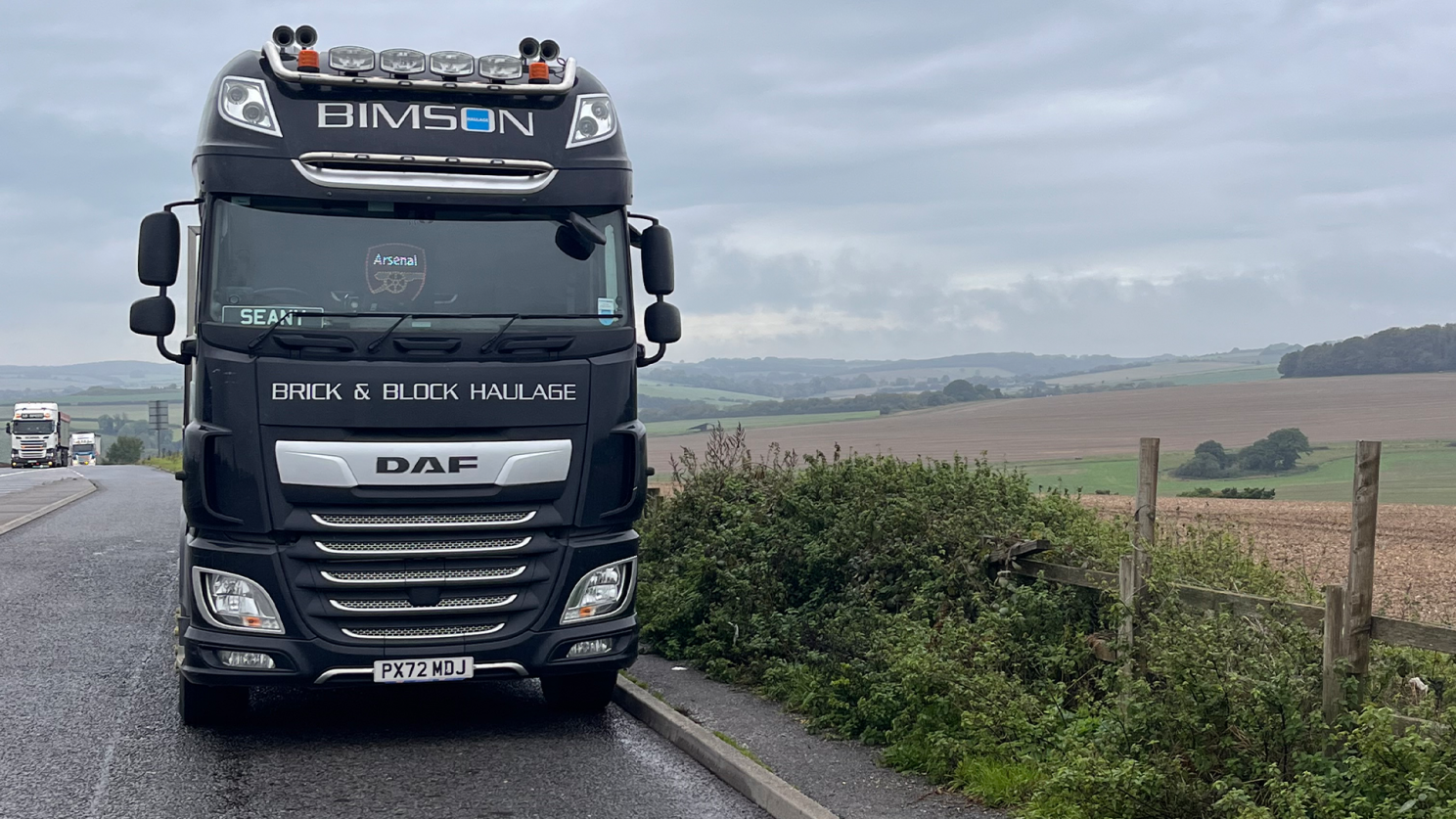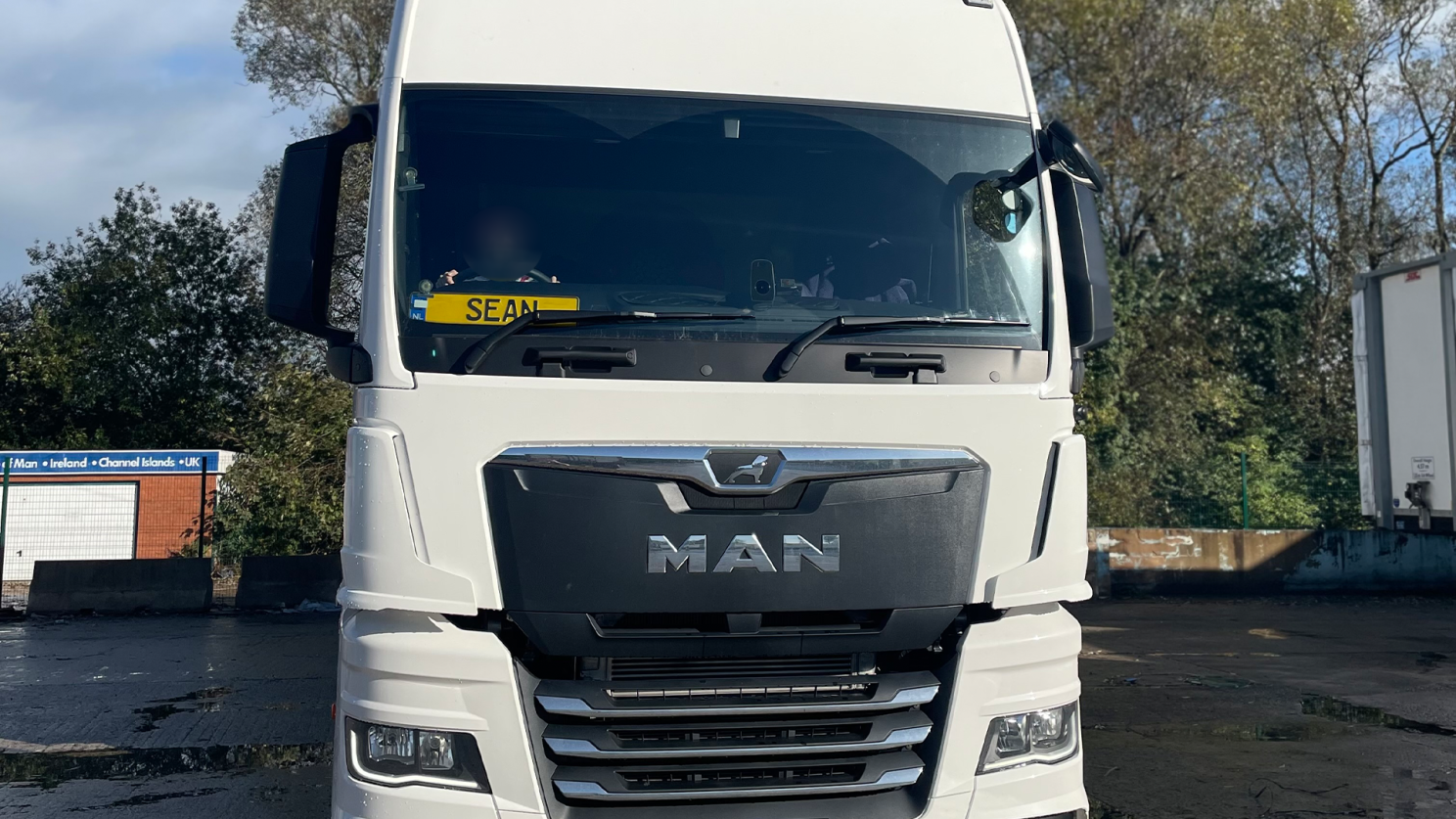
Susie Jones
Sunkvežimių vairuotojų pasakojimai: istorijos iš atvirų kelių
Sukurta: 22-08-2024
•
Atnaujinta: 22-08-2024
Norime nušviesti sunkvežimių bendruomenę ir susipažinti su žmonėmis, sėdinčiais už vairo.
Sužinokite daugiau apie vairuotojus, pristatančius jūsų prekes - nuo sraigtasparnių, nusileidžiančių priešais sunkvežimius, iki automobilių, važiuojančių ne ta greitkelio puse.
Alan
Alanas vairuoja jau 23 metus ir nusprendė prisijungti prie šios pramonės šakos po to, kai klausėsi Ally Thomson dainų apie sunkvežimių vairavimą. Paklaustas, kas jam labiausiai patinka šiame darbe, jis atsakė, kad "vienatvė, kurią suteikia sunkvežimio vairavimas, - tai visiškas atsiskyrimas nuo namų gyvenimo".
"Volvo" sunkvežimiai yra labai mėgstami, nes jis keliauja po Jungtinę Karalystę ir gabena "Amazon" prekes. Jis sako, kad yra vežęs daug įdomių produktų: "Pasirinkimas yra beribis - tik pagalvokite apie viską, ką parduoda "Amazon"."
Vairuotojams, stovintiems automobilių stovėjimo aikštelėje per naktį, sunku pramogauti prastovos metu. Tačiau patyrę vairuotojai, tokie kaip Alanas, puikiai įvaldė savo vakaro rutiną. Jis teigia, kad "mėgsta žiūrėti "Sky TV" per "iPad", kai stovi nakčiai.

Vairuotojams, kurie stengiasi neprarasti pramogų prie vairo, pateikėme sąrašą būdų, kaip išvengti nuobodulio.
Nors ilgos darbo valandos kelyje daugeliui gali atrodyti monotoniškos, Alanas aiškina, kad visuomet yra kas nors, kas jam neleidžia atsipalaiduoti.
"Manau, kad beprotiškiausias dalykas, kurį esu matęs vairuodamas, yra sraigtasparnis, nusileidęs tiesiai priešais mane", - aiškina jis, - tai toli gražu nepanašu į monotonišką reputaciją, kuri lydėjo šią pramonės šaką dešimtmečius.
23 metus šioje srityje dirbantis Alanas pateikė keletą patarimų, padėsiančių išlaikyti gaivius baltus dantų baltymus kelionių metu.
Jis aiškina: "Patarimas, kurį duočiau visiems naujokams šioje srityje, - visada nepamiršti, kad dantų šepetėlis turi būti įkrautas."
Richard
Prieš 36 metus Ričardas pradėjo savo karjerą krovinių vežimo pramonėje ir niekada neatsigręžė atgal. Jis užsikrėtė vairavimo bacila, kai prisijungė prie savo dviejų vyresnių brolių, padedančių gabenti krovinius visoje Jungtinėje Karalystėje.
"Man patinka gauti krovinį ir išvažiuoti. Galiu nuspręsti, kada turėsiu pertrauką ir kur stovėsiu. Būti kelyje ir keliauti po visą Jungtinę Karalystę yra puiku", - aiškina jis.
Per savo karjerą jis nuvyko į Milaną, Italiją - tai varginanti kelionė net ir labiausiai patyrusiems vairuotojams. Paklaustas, kaip keliaudamas pramogauja, jis atsakė: "Mėgstu klausytis muzikos ir žiūrėti filmus laisvu nuo darbo metu."

Geriausias sunkvežimis, kuriuo galima tai daryti? "Tai turi būti "Scania Next Generation 450S", - sako jis.
Ričardui per 30 darbo metų šioje srityje netrūko beprotiškų istorijų ir neįprastų pristatymų: "Esu matęs, kaip automobilis važiuoja ne ta kryptimi greitkeliu, išvažiuodamas iš nuovažos. Įdomiausias dalykas, kurį esu vežęs sunkvežimio gale, yra Švento Vilfredo dienos parado plaustas."
Nors Ričardas vis dar mėgsta atvirą kelią, jis teigia, kad kartais tai kainuoja. Jis pateikia puikių įžvalgų apie šios profesijos realybę ir patarimų tiems, kurie nori prisijungti prie šios pramonės šakos.
"Labai gerai pagalvokite, ar tai jums tinkama karjera. Tikėkitės ilgų darbo valandų ir šeimyninio gyvenimo stokos."
Seanas
Užaugęs vairuotojų šeimoje, Seanas įaugo į kraują, todėl prieš 20 metų sėdo prie vairo ir pradėjo karjerą krovinių gabenimo pramonėje.
Šis darbas suteikia daug privalumų, tačiau Šonui labiausiai patinka jo suteikiama laisvė. Ši laisvė jį nuvedė net į Škotiją, kur jis dirbo šešias savaites. Tokių ilgų kelionių metu jis pramogauja skambindamas draugams ir žiūrėdamas televizorių.

Be to, sunkvežimių stotelės Seanui atliko svarbų vaidmenį kovojant su izoliacija, kurią sukelia vairavimas. Sunkvežimių sustojimo aikštelėse, kuriose dažnai būna daug veiklos, Seanas gali susitikti su kelionių draugais.
Šios sustojimo vietos yra puiki proga išgirsti beprotiškų istorijų iš kitų sunkvežimių vairuotojų. Panašiai kaip ir Ričardas, keisčiausias dalykas, kurį Šonas matė savo kelionėse, buvo "automobilis, tamsoje važiuojantis greitkeliu į priešingą pusę" - tai pernelyg dažna sunkvežimių vairuotojų bendruomenės istorija.
DAF XF 530 yra Seano pasirinktas sunkvežimis statybinėms medžiagoms vežti visoje Jungtinėje Karalystėje. Jis pataria visiems, norintiems siekti karjeros sunkvežimių srityje, "tiesiog imkitės to!"
Dave
Dave'as sunkvežimius vairuoja jau 30 metų ir yra nukeliavęs iki Danijos ir Ispanijos. Kai jis nevažinėja savo mėgstamiausiu sunkvežimiu "Volvo FH", mėgsta patogiai įsitaisęs kabinoje žiūrėti serialus.
"Dėl kai kurių automobilių vairuotojų elgesio galiu papasakoti beprotiškų istorijų, - aiškina jis. Tačiau kai paklausėme Dave'o apie įdomiausią daiktą, kurį jis yra vežęs savo sunkvežimio gale, jis liko paslaptingas - "tai yra didžiausia paslaptis", - teigia jis.
Per 30 krovinių gabenimo metų Dave'as išmoko keletą dalykų apie krovinių gabenimo pasaulį. Jis duoda puikų patarimą tiems, kurie nori pradėti savo karjerą šiame sektoriuje: "Būtinai specializuokitės tam tikroje srityje".
Alastair
Alastairas, palyginti neseniai pradėjęs dirbti šioje srityje, nusprendė siekti sunkvežimio vairuotojo karjeros, kad būtų užimtas išėjęs į pensiją. Penkerius metus dirbantis Alastlastaras labiausiai džiaugiasi šios profesijos įvairove.
Per tą laiką Alastair'as spėjo pakeliauti po Jungtinę Karalystę ir Europą: "Keliavau į Invernesą, Kopenhagą, Lisaboną, Budapeštą ir Romą", - teigia jis.
Kad nebūtų nuobodu, Alastairas mėgsta klausytis "Radio 4", "LBC" ir "5 Live".
Keliaudamas po Europą, jis yra matęs nemažai neįprasto kitų eismo dalyvių elgesio atvejų. Tačiau arčiau namų jam teko manevruoti sunkvežimiu per "demonstracijas Londone". Tai tikriausiai buvo beprotiškiausias dalykas, kurį esu patyręs", - aiškina jis.
Agentūros 007 gerbėjams Alastairas pasakoja, kaip jam teko gabenti kai kuriuos visiškai slaptus daiktus.
"Įdomiausi daiktai, kuriuos esu vežęs sunkvežimio gale, tikriausiai būtų Džeimso Bondo parodos eksponatai", - teigia jis.
Nors Alastairas šioje srityje dirba neilgai, jis turi keletą žodžių naujokams.
"Patarimas, kurį duočiau tiems, kurie galvoja apie įsitraukimą į krovinių gabenimo pasaulį, - išlikti ramiems."
Sean V
Seano meilė keliui atsirado dar vasaros atostogų metu, kurias jis praleido su tėčiu keliaudamas jo sunkvežimiu. Po 30 metų vairavimo jo meilė vairavimui ir toliau stiprėja.
"Šiame darbe man patinka matyti visas gražias Jungtinės Karalystės ir Europos vietas", - aiškina jis. Šis darbas jį nuvedė į įvairias šalis, o tolimiausia kelionė - Roma.
Kai nesiima tyrinėti miestų ir miestelių, Šonas mėgsta pramogauti žiūrėdamas televizorių, naudodamasis "iPad", o dar visai neseniai - žaisdamas žaidimus patogiai įsitaisęs savo kabinoje.

Beprotiškiausias dalykas, kurį jis matė kelyje?
Deja, Šonui tenka dar kartą pamatyti vaizdą, kuris sunkvežimių vairuotojams yra pernelyg dažnas - "greitkeliu į priešingą pusę važiuojantį automobilį", - aiškina jis.
Per 30 metų trunkančią karjerą Seanas teigia, kad DAF sunkvežimius vairuoti jam patiko labiausiai, o įdomiausias jo gabentas daiktas buvo "specializuota medicininė įranga".
Seano meilė pramonei nusveria kai kuriuos neigiamus darbo aspektus. Tačiau tiems, kurie nori pradėti karjerą krovinių gabenimo pramonėje, jis gali pasiūlyti šiuos išmintingus žodžius:
"Jei ketinate prisijungti prie šios pramonės šakos, tikėkitės ilgų darbo valandų."
Užsiregistruokite SNAP šiandien
SNAP palengvina jūsų gyvenimą, sujungdama jus su mūsų plačiu kelių transporto paslaugų tinklu. [Užsiregistruokite šiandien] (https://snapacc.com/sign-up/)



